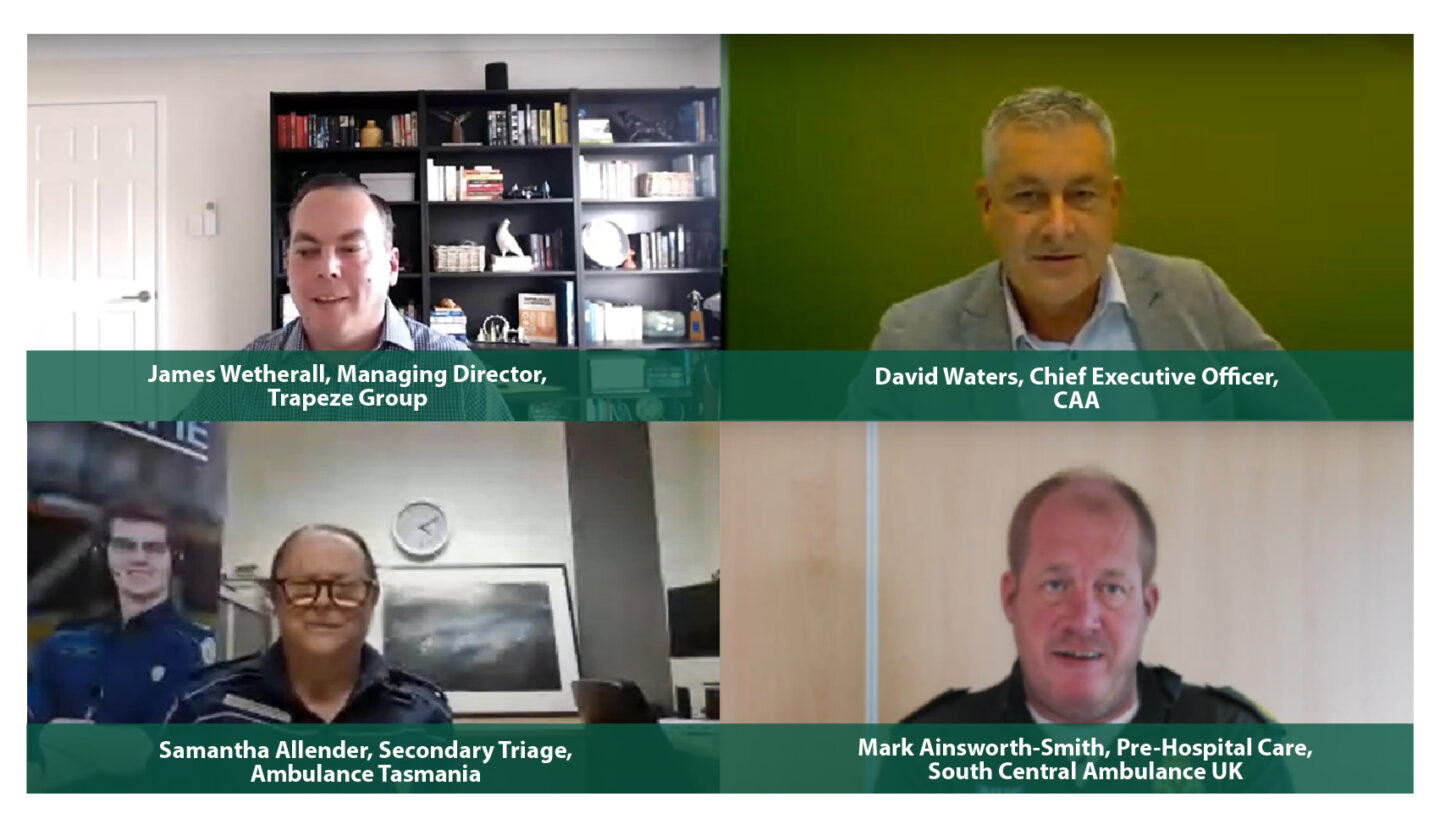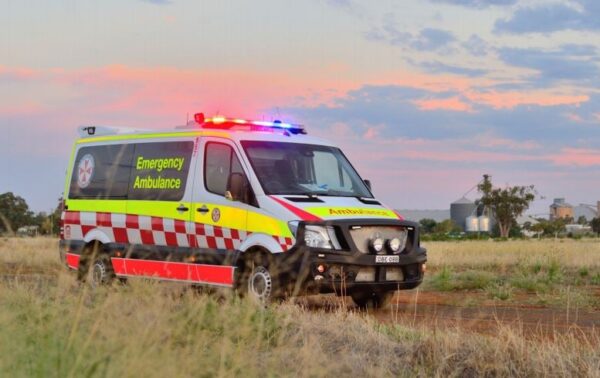Missed our webinar with CAA on connecting clinicians and data to support patient outcomes? Find out the important takeaways.
With ambulance service demand increasing by 20% year on year globally, optimising operations to support patient care is more critical than ever. Doing more with less, within an ever-changing operating environment, is placing increased pressure on services.
On September 28, 2021, Corvanta, and the Council of Ambulance Authorities (CAA) hosted a webinar to discuss “Connecting Clinicians and Data to Influence Patient Outcomes.”
The webinar highlighted the latest technology innovations used right now that support next-generation models of care – including how data is valuable in delivering truly integrated patient treatment, and dramatically increasing pre-hospital efficiencies and effectiveness.
If you missed the event, read on to learn about the highlights!

The webinar featured the following speakers:
- Mark Ainsworth-Smith, Pre-Hospital Care, South Central Ambulance UK (SCAS)
- Sam Allender, Secondary Triage, Ambulance Tasmania
- James Wetherall, Managing Director, Corvanta
Mark Ainsworth-Smith, an MBE recipient for his services to the UK health sector, presented how SCAS have leveraged data and analytics to successfully change their model of care. SCAS, which serves an area of five million people, used complicated paper-based records until 2015. When they transitioned to a digital system, it allowed the real-time electronic transfer of patient health information to increase care levels.
Mark said, “SCAS are using electronic patient records (ePRs) to improve clinical care and reporting. Since we have implemented ePRs, ambulance crews and health professionals can view all important information. For example, in heart attack cases, we can send the ECG straight through to the receiving hospital so they can plan for care before we even arrive.”
Mark also shared insights that helped SCAS improve the planning, resourcing, and deployment of ambulance resources so they can be used most effectively. For example, SCAS know areas and times of peak demand and the incidents that cause them, and where and when road traffic incidents occur.
Sam Allender talked about how Ambulance Tasmania provides patients with alternative treatment pathways through secondary triage and coordination with third-party providers. Ambulance Tasmania has had to deal with a large increase in demand and had to rethink how they could provide the best, most relevant patient care for every 000-emergency call.
Sam discussed, “Understanding the data and options to mitigate risk with secondary triage ensures that positive patient outcomes and experiences will continue. With continued innovation, our data will provide further insights to significantly improve strategies that can be leveraged to ensure efficiencies in the Tasmanian healthcare system.” Ambulance Tasmania uses technology to support the secondary triage model by providing information to paramedics on risk factors and patient needs. Many patients are now sent to appropriate care like private hospitals or GPs, instead of only the public emergency department.

James Wetherall spoke about the “Digital Twins”. That is, how technology delivers rich, real-time, interactive digital representations from the real world of pre-hospital patient care information to form Integrated Patient Care Records (iPCR). The Digital Twins provide new opportunities for information sharing, collaboration, and post-care research.
James stated, “With a Digital Twin, you can represent the physical world in a digital environment. It’s a data model that mirrors real life that’s fundamentally open and interoperable. You can leverage it by sharing data in real time with stakeholders and it exists in perpetuity. You have a single view of the truth where cause and effect are modelled and visualised. We can then understand how incidents are related.”
These digital representations make the most of stretched resources, eliminates information silos, and creates integrated patient care from the scene to handover at the clinical destination.
The webinar moderator, CAA Chief Executive, David Waters said, “I think the future in this space is really exciting, with lots of innovation happening. Technology can really enable the paramedic to be very effective, and I’m looking forward to future conversations on connected data, the connected paramedic, and the connected patient. This is a really important conversation, and we’re keen to keep it going.”
Mark, Sam, and James showed that to maximise resource utilisation and patient outcomes, a coordinated pre-hospital emergency response relies on all stakeholders having insights into patient care. Having the right information, in the right place, at the right time, empowers clinicians to make better decisions for improved patient outcomes. Integrating patient information across the pre-hospital sector enables all stakeholders to achieve extraordinary efficiencies, increase paramedic safety, and most importantly, places the patient at the centre of paramedic care.
You can watch the webinar in full below.
About Corvanta
Corvanta has launched from the former emergency services business within Trapeze.
With a team who are truly dedicated and passionate about what they do, Corvanta understands the impact ambulance services have on people’s lives. In an industry where providing essential health services and excellence in pre-hospital care is paramount, it is crucial patients receive the right care, at the right time, at the right place.
To meet these objectives, our team are solely focused on delivering solutions that connect patient journeys to support meeting KPI’s, improve paramedic safety and influence better outcomes.
For more information, visit corvanta.com




